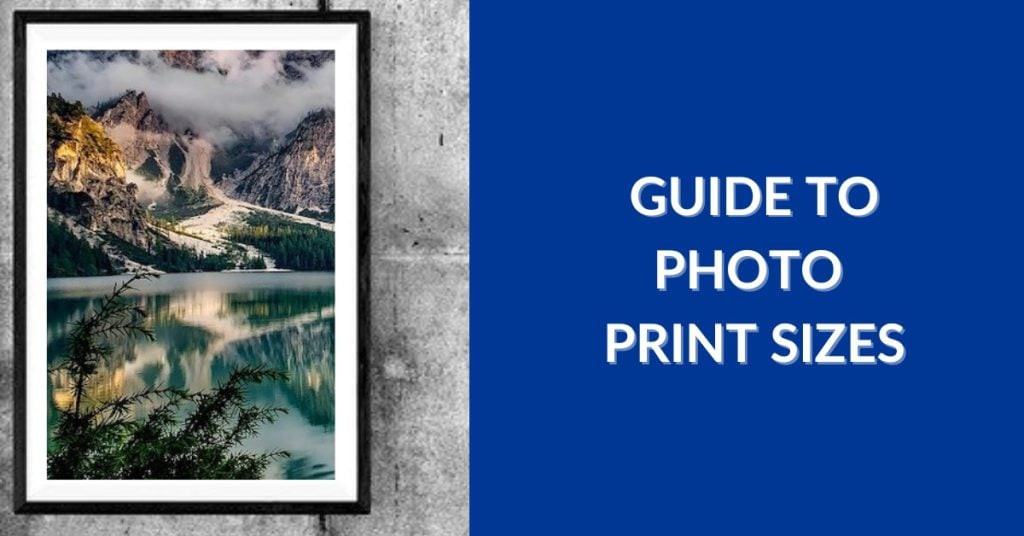From passionate hobbyists to seasoned professional photographers and artists, understanding photo print sizes is fundamental to any visual project. While it may seem straightforward, grasping the nuances of proper dimensions is crucial. It helps prevent issues like pixelation and distortion and simplifies the frame selection process. Knowing standard photo print sizes also allows you to plan your work effectively from the outset, ensuring you maximize the impact of your creative efforts.
In this guide, we will explore the essential standard photo print sizes used across various applications, delve into common aspect ratios, and provide you with the knowledge to make informed decisions about your photo prints.
Why the Right Photo Print Size Truly Matters
In photography, photo prints, and the world of printed art, size is undeniably a critical factor. Choosing the correct size ensures your photos and artwork are displayed with maximum impact, enhancing their visual appeal and allowing viewers to appreciate them fully. Proper sizing showcases your work in a way that best complements its details and artistic merit.
Furthermore, selecting the appropriate picture size can significantly streamline your workflow. It minimizes the need for time-consuming adjustments like cropping to fit predetermined dimensions, saving you valuable time and effort in post-processing or print preparation.
Understanding Aspect Ratio in Photo Print Sizes
Aspect ratio is a term that describes the proportional relationship between an image’s width and its height. It’s expressed in the format ‘X:Y’, where ‘X’ and ‘Y’ are whole numbers representing the ratio.
Aspect ratios are essential not only for understanding the dimensions of a photo or image but also for determining its shape – whether it leans towards a square or a rectangle.
For instance, a 1:1 aspect ratio signifies a square image where the width and height are identical. Conversely, a 3:2 aspect ratio indicates a rectangular image with the height being proportionally larger than the width.
Exploring Common Aspect Ratios
1:1 Ratio
This ratio creates a square image, with equal width and height. The 1:1 aspect ratio is frequently used for social media profile pictures, website thumbnails, and a variety of small to medium-sized photos and artworks where a balanced, symmetrical format is desired.
3:2 Ratio
The 3:2 aspect ratio is a widely adopted standard, prevalent in both digital photography and traditional film formats. Interestingly, 3:2 is also the native aspect ratio of classic 35mm film, making it a familiar and versatile choice for many photographers.
4:3 Ratio
Commonly found in computer monitors, digital cameras (especially older models), and standard definition televisions, the 4:3 aspect ratio offers a squarer shape than widescreen formats. It’s often a suitable ratio for images intended for digital display on screens with this aspect ratio, bridging the gap between print and digital viewing.
16:9 Ratio
You’ve undoubtedly encountered the 16:9 aspect ratio when watching movies or viewing content on widescreen displays. It’s the standard for widescreen TVs and modern computer monitors. This rectangular shape is more elongated than the 4:3 ratio, providing a wider field of view, ideal for cinematic and panoramic imagery.
Standard Photo Print Sizes for Your Images
Photo prints provide a tangible way to share and appreciate your digital photography or artistic creations. However, incorrect sizing can lead to unwanted resolution loss or the unintentional cropping of important image details. Therefore, understanding standard picture sizes and their corresponding ratios is vital for achieving optimal print results.
4 x 6 Inches
The 4×6 inch print is arguably the most common and standard photo size. It perfectly aligns with a 3:2 aspect ratio, making it an ideal choice for standard photographs, framed greeting cards, postcards, and various everyday photo keepsakes. For the best print quality at this size, aim for a digital image resolution of 1200 x 1800 pixels.
 4×6 photo print size example
4×6 photo print size example
5 x 7 Inches
Slightly larger than the 4×6, the 5×7 inch print size is well-suited for slightly more prominent photo displays and artwork. When capturing images with a digital camera intended for this print size, a 3.5:2.5 aspect ratio is recommended for best results. A pixel dimension of 1500 x 2100 pixels is generally considered optimal for 5×7 prints.
8 x 10 Inches
The 8×10 inch photo print represents a popular medium size, striking a balance between impact and manageability. For this size, using a 5:4 aspect ratio on your camera is typically the most suitable setting. While minor cropping on the sides may be necessary depending on the original image’s aspect ratio, it’s usually minimal. When composing your shot for an 8×10 print, consider positioning key elements away from the extreme edges of the frame to accommodate potential cropping.
8.5 x 11 Inches
The 8.5 x 11 inch size, equivalent to standard letter paper, is excellent for larger framed prints or smaller posters. To achieve the best print quality at this size, a 4:3 aspect ratio and resizing your image to approximately 3400 x 4400 pixels is recommended.
12 x 18 Inches
Ideal for showcasing larger photographs and artwork, the 12 x 18 inch print size offers significant visual impact. For optimal results, aim for a digital image resolution of around 3600 x 5400 pixels and a 3:2 aspect ratio to match the print dimensions.
18 x 24 Inches
As print sizes increase, so does the required image resolution to maintain quality. For 18 x 24 inch prints, it’s best to work with images around 5400 x 7200 pixels. An aspect ratio of 3:4 aligns well with these dimensions.
24 x 36 Inches
The 24 x 36 inch print size makes a bold statement. To maximize the impact and quality of extra-large prints like this, aim for a high resolution of 7200 x 10800 pixels in your digital image. A 3:2 aspect ratio is ideally suited for 24×36 prints.
Photo Print Sizes: Simpler Than You Think
Once you become familiar with standard photo print sizes and aspect ratios, you’ll gain the confidence and know-how to ensure your photos and artwork translate beautifully from digital to print. Understanding these dimensions empowers you to create stunning prints that accurately reflect your creative vision.
More Common Questions About Photo Prints
What are typical standard print sizes?
Typical standard print sizes for photographs commonly include 4×6 inches, 5×7 inches, 8×10 inches, and 11×14 inches. These sizes cater to a wide range of display needs, from casual snapshots to framed wall art.
What is considered the most standard photo size?
While “standard” can be subjective and vary by region or application, the 4×6 inch size is widely considered the most common standard size for general-purpose printed photographs due to its versatility and convenient proportions.
Written by Mark Rogers
